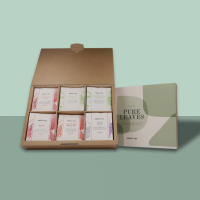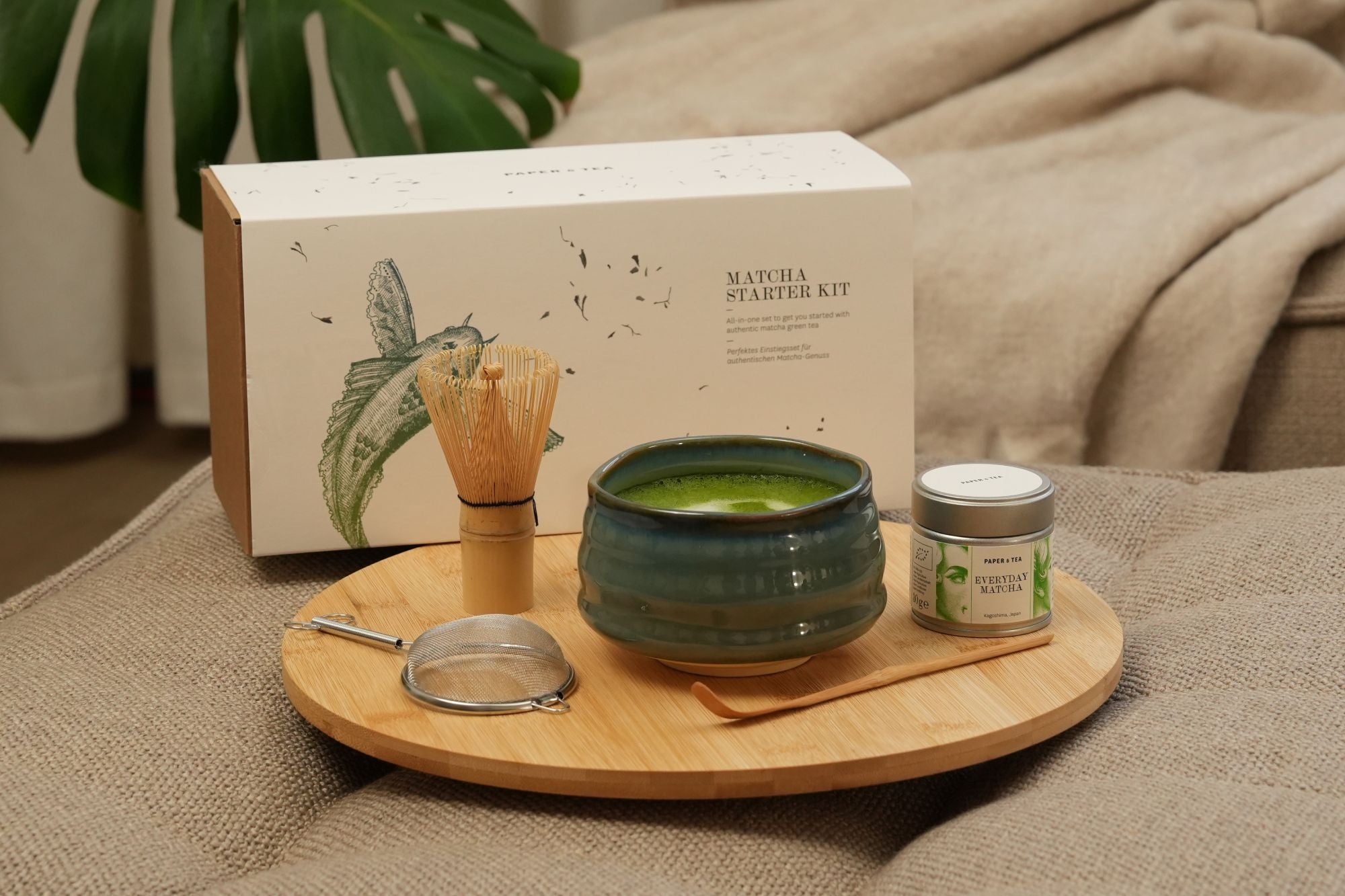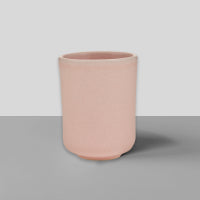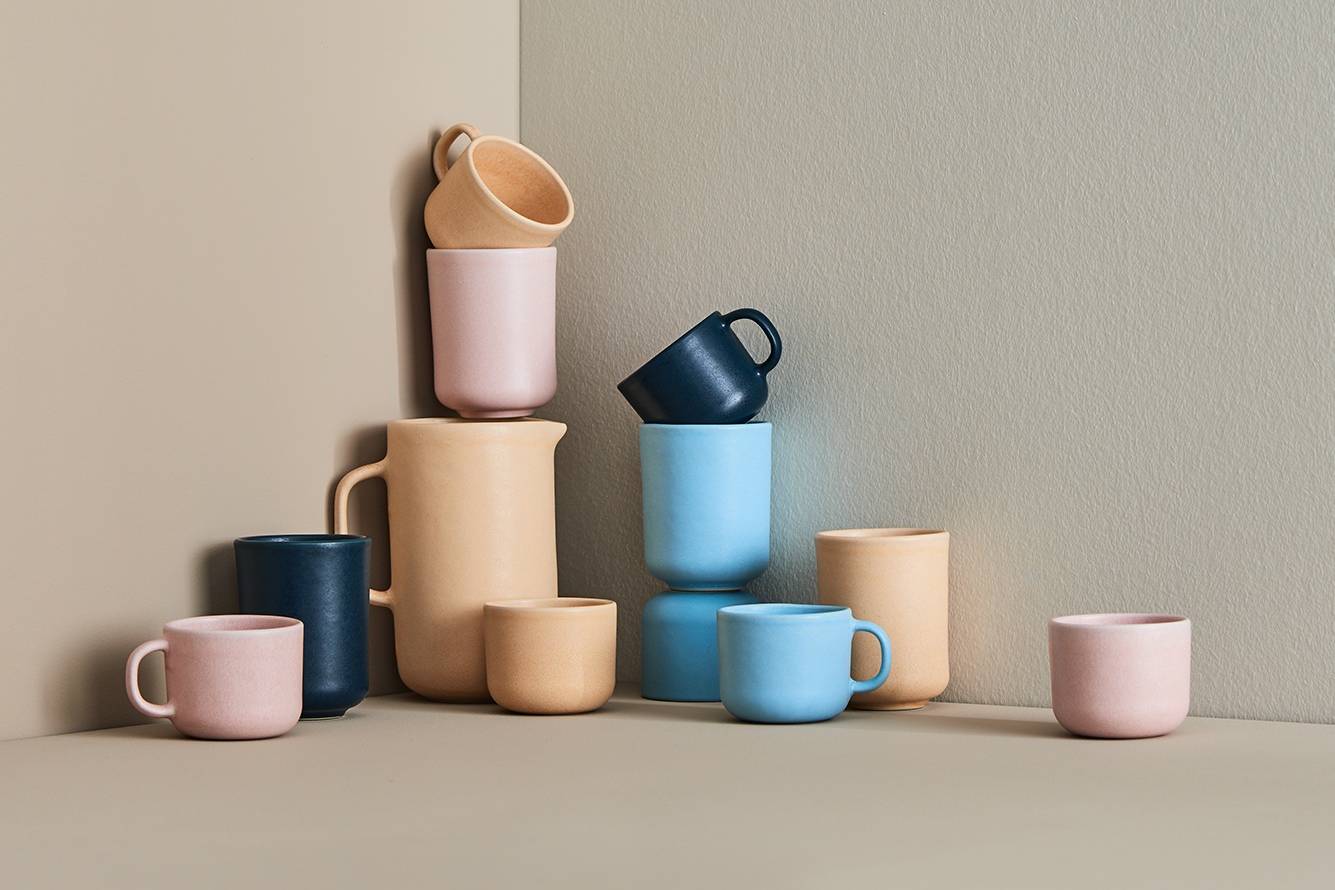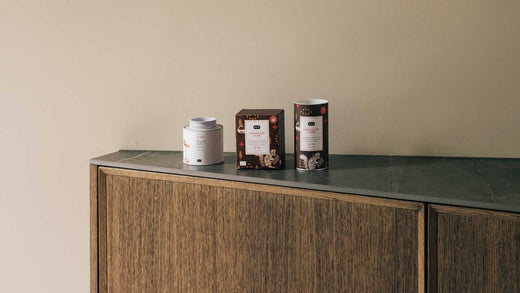One plant, six tea varieties – but only one of them is distinguished by a unique manufacturing process: Pu-Erh tea, named after the city in the southern Chinese province of Yunnan. The result is a distinctive, earthy flavor with intense aroma. We believe that Pu-Erh tea deserves more spotlight and want to bring it closer to you in this post!

What is Pu-Erh Tea?
Pu-Erh tea, also known as dark tea, embodies an age-old tradition and matures over the years into a flavorful masterpiece. Unlike the five other varieties from the Camellia Sinensis tea plant (green tea, black tea, oolong, white tea, and yellow tea), Pu-Erh tea is not just made through oxidation but through a precise biological process called fermentation.
The taste of this fermented tea can vary greatly depending on its region of origin, processing method and age. It often has earthy, woody, sometimes slightly sweet or floral notes. Maybe you’ve tried Pu-Erh tea before and weren’t too impressed with the taste? We believe that this diverse tea deserves more than one chance!

The Origins of This Unique Tea
Pu-Erh tea originates in the fascinating province of Yunnan in southwest China. Not only are the rich culture, picturesque landscapes and diverse people of Yunnan unique but since ancient times, a major trade route ran through Yunnan province on the famous Tea-Horse Road, serving as a center for trade between China, Tibet, and India. The history of Yunnan as a center for tea cultivation and production, particularly Pu-Erh tea, dates back more than 1,000 years!
From Leaf to Drink: The Production Process
The skillful production of Pu-Erh tea requires a vast knowledge base and years of experience. You may already know that black tea is fully oxidized during its processing, whereas with green tea oxidation stops early. In contrast to the chemical process of oxidation, an important component in the production of other tea types, fermentation is a controlled biological process. To help you better imagine how the traditional craft of Pu-Erh tea works, we guide you through the various steps:
- First, the tea leaves are plucked, preferably the younger, more tender shoots.
- The leaves are spread out to wither.
- Now they are ready to be rolled. This breaks the cell structures, releasing enzymes that initiate the fermentation process.
- In a moist and warm environment, the leaves are fermented. They are initially piled up and covered and then regularly turned until they mature. The microbiological processes taking place are what makes the taste of Pu-Erh tea so unique!
- After drying, Pu-Erh tea is often pressed into a tea cake. The compressed mass can be round, rectangular, and of varying sizes. Artistic designs with motifs or embossments give a tea cake a unique aesthetic appeal!
Besides the visual advantages, this tradition also provides Pu-Erh tea with excellent protection against external influences and allows for even longer maturation and development of its aromas.
The Variety of Pu-Erh Tea: Sheng or Shou?
Pu-Erh tea's fermentation occurs naturally or is accelerated. This difference in the process significantly impacts the taste of Pu-Erh tea and produces two varieties: Sheng and Shou.
Sheng Pu-Erh: The Original Raw Form
Sheng Pu-Erh, also known as raw Pu-Erh tea, is naturally aged over time, which can take several years or even decades! During this time, it develops uniquely complex and rich flavor profiles, often described as earthy and woody. The subtle differences in its strong and sometimes astringent taste are influenced by the natural environment where the tea leaves reside during maturation.

Shou Pu-Erh: Masterfully Fermented
Shou Pu-Erh, also known as ripe Pu-Erh tea, undergoes accelerated fermentation. Here, traditional technique and modern know-how are combined. Regular moisture and temperature controls allow for targeted intervention in fermentation by human hand, creating ideal conditions for microorganisms speeding up fermentation. Additional aging is no longer necessary for Shou to offer an enjoyable sip of Chinese culture.
The Difference Between the Production Methods
Shou or Sheng, which is better? Indeed, the answer to this question entirely depends on your personal taste!
The Long-Term Aging of Pu-Erh
The traditional aging process allows the tea to develop its complex and deep flavor over the years. If intense, woody, earthy and mossy flavors with subtle floral and fruity nuances sound appealing to you, Sheng Pu-Erh will offer you a true tea experience!
The Fermentation of Pu-Erh
Through artificial aging, Pu-Erh tea develops a similar taste and related aromas to aged Pu-Erh tea, with earthy, woody and sometimes sweet notes. Shou Pu-Erh tea can be gentler and more balanced than the astringent raw Pu-Erh tea.

Your Own Preparation Ritual
The preparation of Sheng and Shou Pu-Erh tea is generally similar. Pu-Erh tea can be brewed using traditional methods like Gongfu Cha or Western preparation.
Our recommendation: Take an appropriate amount of tea leaves (about 2 teaspoons per 250 ml) and briefly rinse them with hot water to clean and wake them up. They are now ready to be infused! Make sure that the brewing temperature is between 90°C and 100°C. You can find exact instructions, depending on the variety, in our product recommendations or on the product packaging. Especially raw Pu-Erh tea can be wonderfully re-steeped multiple times.
How long you let the tea steep, depends on your personal preferences. We recommend a steeping time of 1 minute for our Sheng Pu-Erh and about 2 minutes for our Shou Pu-Erh, extending the steeping time by approximately 30 seconds with each subsequent infusion. You can find additional useful preparation tips in our magazine.

What to Look Out For When Buying
Curious and want to try Pu-Erh tea? Here are some important tips to consider when buying Pu-Erh tea.
The Significance of the Region of Origin
The origin has a considerable influence on the quality and taste of tea. Yunnan has been renowned worldwide for its unique tea tradition for centuries and continues to significantly contribute to China's tea culture.
The term Pu-Erh is now protected and only tea from the Yunnan region can be called true Pu-Erh. The world of Pu-Erh tea is susceptible to counterfeits due to its long history and high cultural value. To avoid disappointment, it is advisable to pay attention to the authenticity of the brand and the label and to buy only from trusted sources.
How to Identify Quality Pu-Erh
It takes some knowledge to identify high-quality Pu-Erh tea. A look at the packaging can give you initial clues. Check the reputation of the manufacturer and the origin region of the tea. The pressed form of a tea cake should be even and precise. The leaves of quality Pu-Erh appear whole and intact, with uniform color and size. Broken and crumpled leaves can indicate lower quality.

The color of the tea can range from a strong green to a dark brown. High-quality Pu-Erh tea often produces clear and vibrant infusions with a beautiful cup color that, depending on the variety, can range from a light yellow to a deep red and remains deliciously aromatic in the cup even after multiple infusions.
Sustainability and Ethical Cultivation
Environmental protection is important to us, which is why we place great value on fair production conditions for both people and nature. Many of our products come with organic labels. In our online shop, you can easily buy organic teas and we are also happy to advise you in our stores. Is your favorite tea running low or already used up? Our tea tins can be refilled in an environmentally friendly way, and they look beautiful on the shelf.
Pu-Erh Tea Connects
If you are up to take a sip of this traditional beverage, you can try the ones from PAPER & TEA. Our blend CHOCOLATE CURE is the perfect start for the curious, as we combined strong cocoa flavors with the mild-earthy nuances in this modern interpretation of Pu-Erh. With our WILD & RAW, you will discover the original Sheng Pu-Erh that has matured for years into an unparalleled taste sensation with notes of fresh foliage, birch, and honey.
Would you like to gather with other tea-loving people and share experiences together? In our stores, we regularly host tea tastings, led by tea experts who can't wait to share their tea knowledge with you and give you a taste of this special beverage! Just stop by and become part of our tea community. Whether for a cozy exchange in a workshop or a relaxed stroll through selected tea products – we look forward to seeing you!

